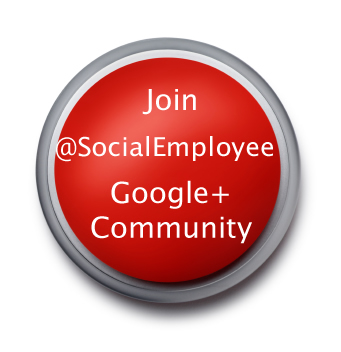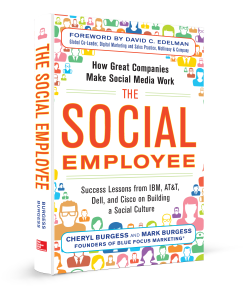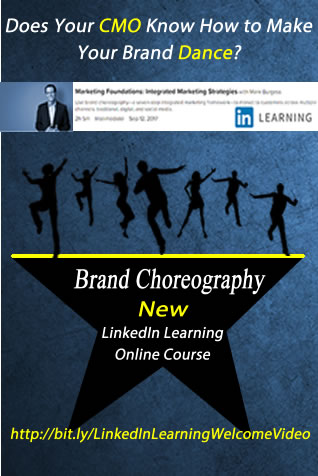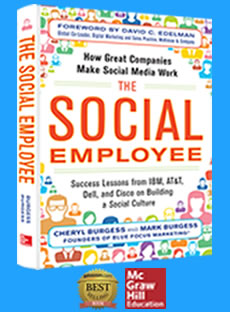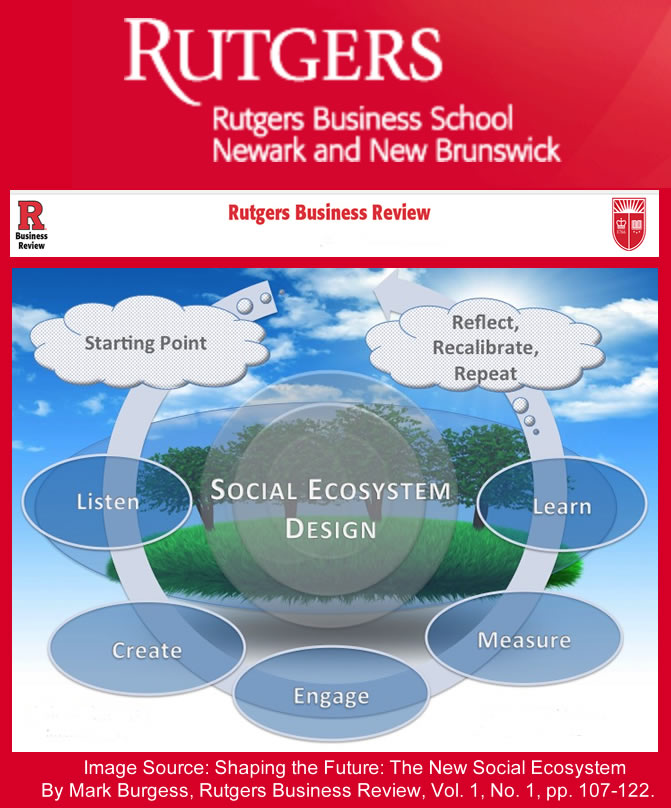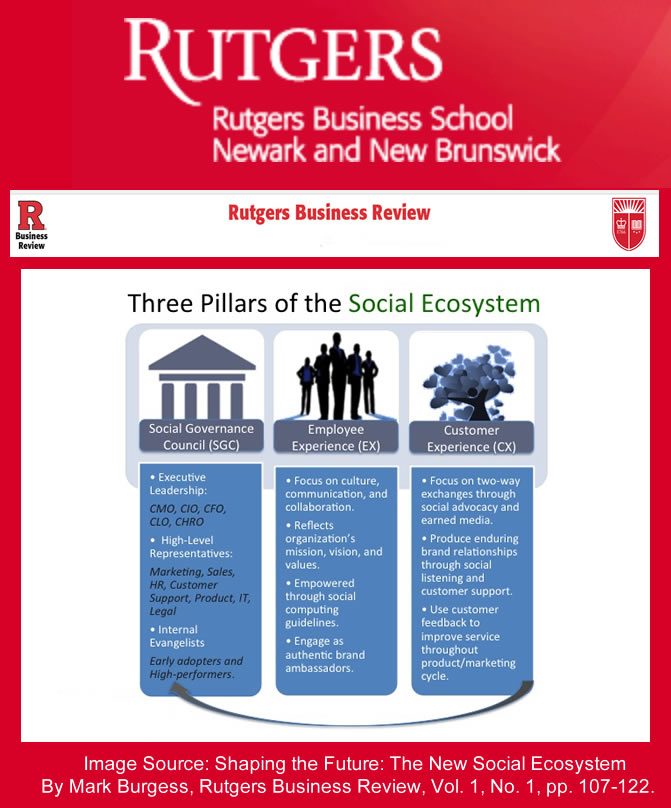 It is every brand’s responsibility to leave as large a footprint as possible in the digital village. There must be no mistaking that, yes, your brand was here, and yes, its presence is worth paying attention to. This is a process undertaken in thousands of small steps. The challenge is to make sure these steps look deliberate and coordinated. The more focused the effort, the greater the impact, and the larger your brand’s digital footprint will become.
It is every brand’s responsibility to leave as large a footprint as possible in the digital village. There must be no mistaking that, yes, your brand was here, and yes, its presence is worth paying attention to. This is a process undertaken in thousands of small steps. The challenge is to make sure these steps look deliberate and coordinated. The more focused the effort, the greater the impact, and the larger your brand’s digital footprint will become.
Social businesses are ideally suited for this task. During our interviews with IBM for our book The Social Employee (McGraw-Hill, 2013), we had a chance to speak with Ethan McCarty (@ethanmcc), Director of Enterprise Social Strategy, about the company’s own digital footprints. In the course of our conversation, he provided a very useful analogy that I think typifies the value of social employee engagement strategies.
The analogy goes something like this: Let a baseball represent a traditional, command-and-control organization, and let a bag of marbles represent a social business. Both of these objects have roughly the same amount of volume. However, because the bag of marbles is comprised of many smaller, independent objects, its total surface area is considerably greater than that of the single baseball. Not only that, but these marbles are capable of freely moving around within the bag, making new connections and forming new configurations from moment to moment.
Following McCarty’s analogy, in order to leave a big footprint, brands must leverage their employee bases to create as much surface area as they can. It’s not that brands need to have bigger feet than Bigfoot, it’s that they need to produce greater surface area through the cumulative impact of their smaller, individual footsteps. By engaging more frequently through smaller, user-focused interactions, a brand can cover more ground in the same amount of time, thoroughly explore and understand that ground, and create more opportunities for creativity, collaboration, and innovation in the process.
A brand might leave a footprint in the mud every once in a while, but once everyone has had a chance to examine that single, ambiguous depression in the mud, they will realize that they’re no closer to understanding the brand, what makes it tick, or where it’s headed. This is not the kind of impression today’s brands can afford to make.
In the world of social business, we should aspire to be less like Bigfoot and more like the millipede, which is ultimately better equipped to leave the larger cumulative footprint in the digital bazaar. The millipede, after all, coordinates hundreds of individual parts to propel itself forward, gets where it’s going without much of a fuss, and quickly and decisively changes direction without wasting too many costly, errant steps.
As Cheryl Burgess, my co-author of The Social Employee said last month on IBM’s Smarter Planet blog, before a brand can communicate externally it must first engage internally.
So it is with leveraging social employees in the digital bazaar. While each individual act or engagement may not seem like much, when taken as a whole, they create a rich network of connectivity, knowledge, and authority can’t be matched. For a social business to move like the millipede, a social employee culture must be established early and reinforced regularly. That way, moving forward will always feel natural, effortless, and instantaneous.
This post was originally published on IBM’s Smarter Planet Blog.
In The Social Employee, we go behind the scenes with several leading brands—such as IBM, AT&T, Dell, Adobe, Southwest Airlines, Cisco, Acxiom, and Domo—pulling the lid off the inspiring social business success stories that have propelled these companies into the 21st century. These cutting-edge brands have all come to the same realization: the path to social business lies through empowering the social employee.
See what others are saying about The Social Employee and order your copy today!
Please check out @SocialEmployee media buzz! 
“Great brands have always started on the inside, but why are companies taking so long to leverage the great opportunities offered by internal social media? . . . The Social Employee lifts the lid on this potential and provides guidance for businesses everywhere.” —JEZ FRAMPTON, Global Chairman and CEO, Interbrand
 The Social Employee offers an unparalleled behind-the-scenes look at the social business success stories of some of the biggest brand names in the business world, including IBM, AT&T, Dell, Adobe, Southwest Airlines, Cisco, Acxiom, and Domo. These cutting-edge brands have all come to the same realization: the path to social business lies through empowering the social employee.
The Social Employee offers an unparalleled behind-the-scenes look at the social business success stories of some of the biggest brand names in the business world, including IBM, AT&T, Dell, Adobe, Southwest Airlines, Cisco, Acxiom, and Domo. These cutting-edge brands have all come to the same realization: the path to social business lies through empowering the social employee.
The brands that leverage their employee base in order to engage customers and prospects through social media are the ones destined to win the marketing wars. This book not only details the astronomical rise of the social employee, but also outlines the innovative methods that leading companies have employed to foster cultures of enthusiastic and engaged workers.
FOR EWORD by David C. Edelman, Global Co-Leader, Digital Marketing & Sales Practice, McKinsey & Company
EWORD by David C. Edelman, Global Co-Leader, Digital Marketing & Sales Practice, McKinsey & Company
AFTERWORD by Kevin Randall, Vice President of Brand Strategy & Research at
Movéo Integrated Branding, and a columnist for Fast Company
